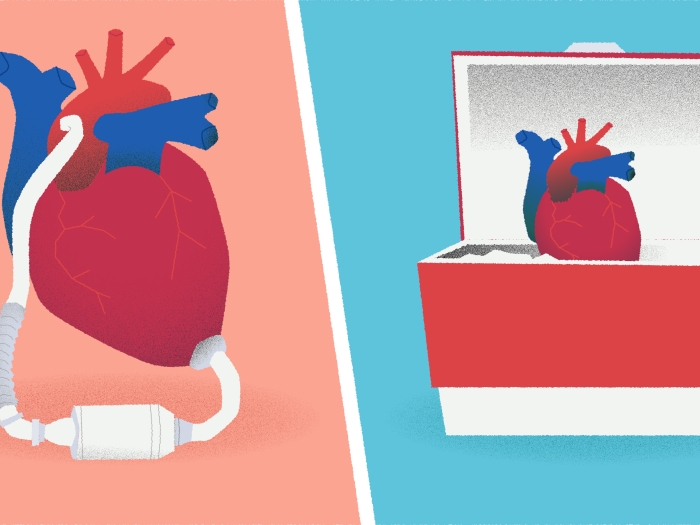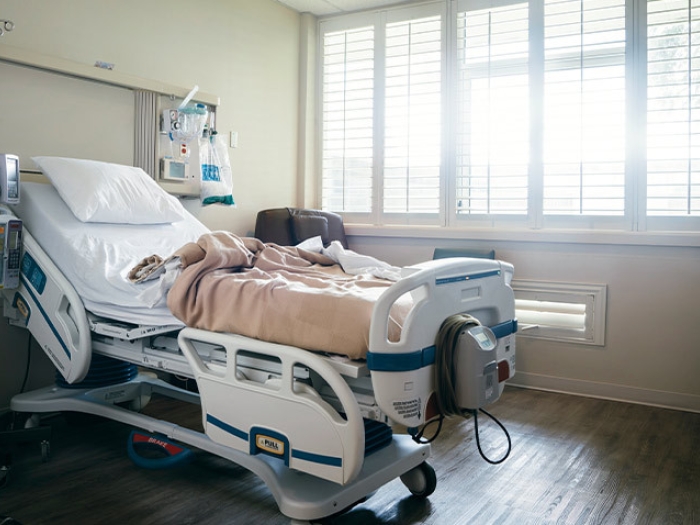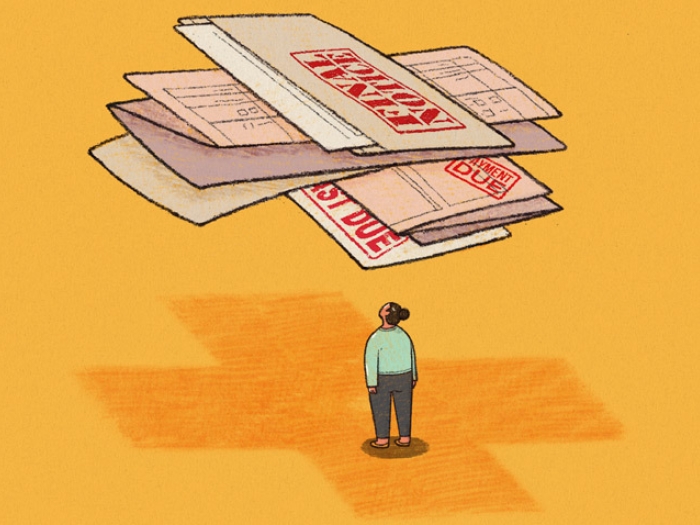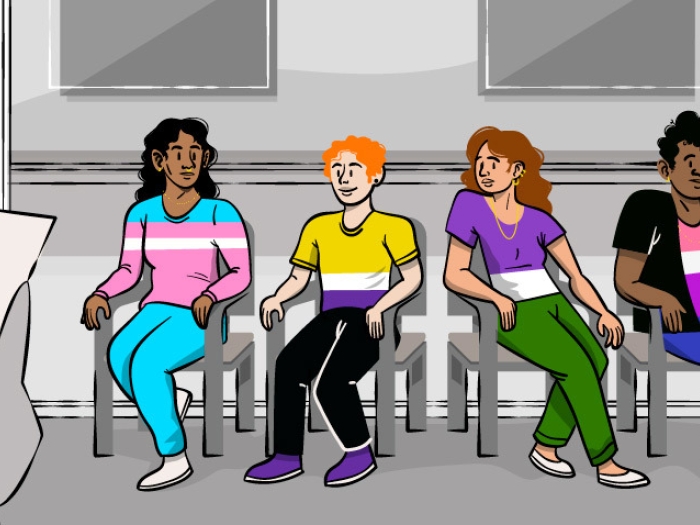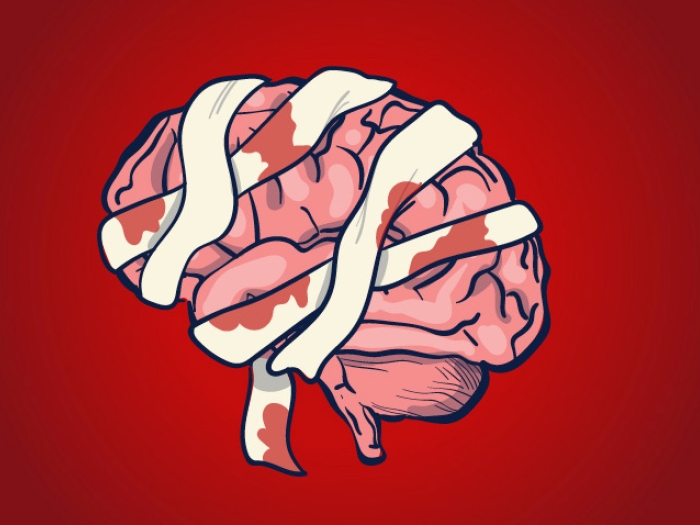Fatigue, sadness and poor health among the spouses who take care of disabled elders can mean higher Medicare bills for the patients. A Michigan Medicine study examines the connection.
1:00 PM
Author |
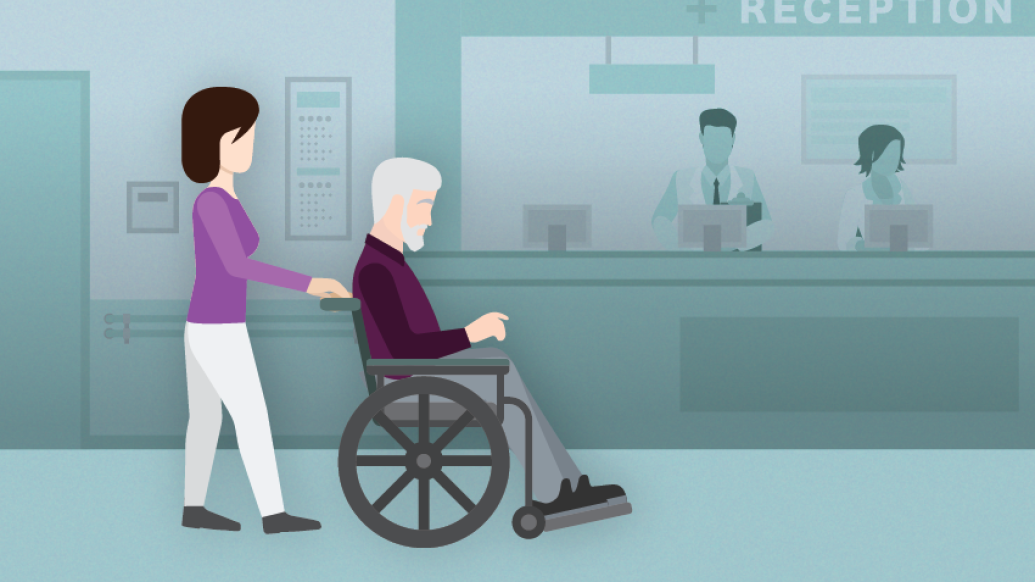
Emergency room staff call it a "pop drop" — when a disabled older person comes in for medical attention, but it also seems as if the at-home caregiver who brought the patient there is simply seeking a break.
MORE FROM THE LAB: Sign up for our weekly newsletter
Although it's difficult to find hard data about the phenomenon, a new University of Michigan study suggests that tired family caregivers are associated with more frequent ER visits and higher health care costs for the patient.
In a paper in the Journal of the American Geriatrics Society, U-M researchers report their findings from a study of 3,101 couples ages 65 and older with one spouse acting as caregiver for his or her disabled partner.
Caregiver spouses took standard tests to measure their fatigue, mood, sleep habits, health and happiness. Over the next six months, researchers looked at the Medicare payments and emergency department visits for the disabled spouses.
During that stretch, emergency department visits were 23 percent higher among patients whose caregivers had scored high for fatigue or low on their own health status — even after accounting for many other factors about the patients.
Medicare costs were also high in that period: $1,900 more if a patient's caregiver scored high for fatigue and $1,300 more if the caregiver scored high for sadness, even after all other factors were considered.
The cost of unpaid help
The "pop drop" concept hasn't been thoroughly studied before.
"Many of us who work in clinical settings feel that patients with high home caregiving needs, such as dementia, often rely on the medical system as a source of respite for their spouses or other caregivers, because other respite isn't paid for," says lead author Claire Ankuda, M.D., MPH.
"But there hasn't been a lot of data about it, and only recently has our society been talking about caregivers and potential ways to incentivize and support them as a way of keeping patients living at home."
Ankuda, who led the study during her time in the Robert Wood Johnson Clinical Scholars program at U-M's Institute for Healthcare Policy and Innovation, is training in palliative care at the Icahn School of Medicine at Mount Sinai in New York.
Focusing on caregiver health is a key step to reducing "pop drop" numbers.
"Informal caregivers, including spouses, enable older adults with functional disability to stay out of the nursing home and live at home where they'd prefer to be," says senior author Deborah Levine, M.D., MPH, an assistant professor of internal medicine and neurology at U-M.
"Our findings suggest that we need to do a better job of identifying and supporting caregivers experiencing distress in order to help caregivers feel better and hopefully improve outcomes in older adults with disability."
We need to do a better job of identifying and supporting caregivers experiencing distress in order to help caregivers feel better and hopefully improve outcomes in older adults with disability.Deborah Levine, M.D., MPH
Long-term data give key insights
The couples in the study were all taking part in the long-term Health and Retirement Study, a comprehensive longitudinal project gathering data on a representative sample of older Americans. It's conducted by the U-M Institute for Social Research on behalf of the National Institutes of Health.
SEE ALSO: A Rising, but Uneven, Tide of In-Home Care for Seniors
Ankuda, Levine and their colleagues probed HRS data so they could correct for factors that other, short-term studies couldn't — such as the baseline level of Medicare costs, demographic differences including income and education, and even whether the couples have adult children living nearby.
The findings add hard new data about the link between caregivers' experiences and the amount the Medicare system pays to take care of their spouses.
Nearly 15 million older adults get help with everyday activities from spouses and other family or friend caregivers. In the new study, the researchers included couples in which one spouse got help from the other with activities such as bathing, dressing, walking, getting in or out of bed, shopping, cooking and taking medications.
Helping with these tasks daily without pay or respite can take a toll on the caregiver's health, wellness and mental state — which can lead to burnout.
Medicare does not offer payment or formal respite coverage for family or friends who take regular care of older adults. It covers home care only by certified agencies under certain circumstances.
More research and services needed
Ankuda notes that more formal studies on the impact of supporting family caregivers are just beginning to produce results.
Meanwhile, health policy researchers are starting to suggest that it may make fiscal sense to incentivize home caregiving to keep seniors from needing more expensive nursing home care.
"I definitely think there are specific services that could help caregivers if we can identify those people who are highest risk and provide a basic level of support, such as an around-the-clock geriatric care call line that could help caregivers feel less isolated and talk to a nurse about whether, for example, to go to the emergency department," Ankuda says. "This is a high-cost, vulnerable population."
Formal respite care, peer support groups and other options could also help stave off fatigue and sadness. In turn, hospital staff who notice "pop drop" practices could help steer caregivers to those options. So, too, could primary care clinicians who treat both the disabled spouse and the caregiver.
Because the new study takes into account the level of Medicare spending for the disabled spouse in the six months before the caregiver was interviewed, it may even underestimate the impact of caregiver fatigue, she notes.
Indeed, before the authors corrected for the full range of factors, they documented that Medicare costs were lower for patients whose spouse caregivers reported being happy or rested. They also saw higher costs among patients whose caregivers had higher depression scores on a standard mood questionnaire.
One factor that wasn't associated with higher costs in the study was the caregiver's score on a standard measure of sleep habits. Sleep disruption is harder to quantify in older people, Ankuda notes. But the measurement of fatigue, which can result from both the strain of caregiving and poor sleep, was clearly associated with higher rates of emergency department visits and higher overall costs.

Explore a variety of healthcare news & stories by visiting the Health Lab home page for more articles.

Department of Communication at Michigan Medicine
Want top health & research news weekly? Sign up for Health Lab’s newsletters today!
